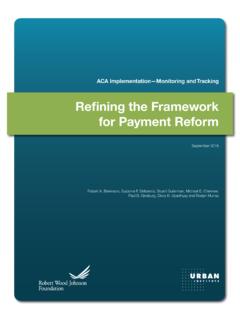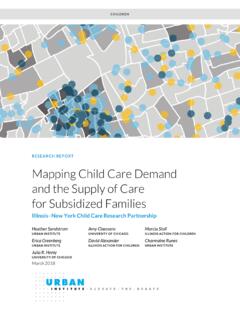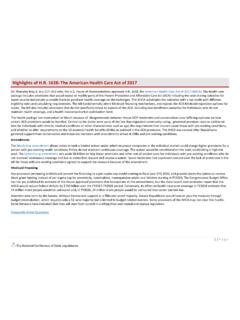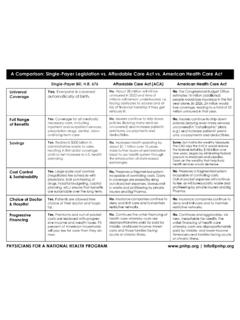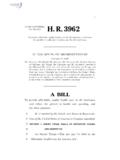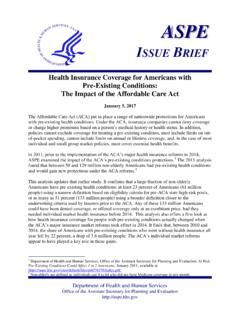Transcription of Implications of the Affordable Care Act for American Business
1 2012, The urban institute health Policy Center page 1 Implications of the Affordable care Act for American Business Linda J. Blumberg, Matthew Buettgens, Judy Feder, and John Holahan October 2012 Executive Summary Critics frequently characterize the Affordable care Act (ACA) as a threat to American Business and to the survival of employer-based health insurance. The law s new requirements, they argue, create Business uncertainty, delay economic recovery, and will cost jobs. But objective analysis of the ACA s impact on coverage and costs demonstrates the opposite. In fact, the ACA s requirements have a negligible impact on total employer-sponsored coverage and its costs. The law leaves large businesses costs per person insured largely untouched and reduces them for small businesses. Only among mid-size businesses (with 101-1000 employees) would costs per person be noticeably higher, largely attributable to those employers not offering coverage today.
2 This policy brief, drawing on several previous urban institute analyses,1 describes what the ACA actually requires or offers businesses of different sizes and uses the urban institute s health Insurance Policy Simulation Model (HIPSM) to update estimates of the law s effects on employer-sponsored health insurance coverage and costs. Our analysis focuses particularly on the impact of the law s penalties on mid-size and large employers not offering coverage or offering unaffordable or inadequate coverage. Taking into account the ACA s effect on coverage, premiums and, if applicable, penalties or tax credits, we find that, had the law been in effect in 2012, Employer-sponsored coverage would have increased by percent (from to million people) and employer spending by percent (from $ to $ billion). The largest relative coverage increase ( percent) would have occurred among workers in small firms, with 100 or fewer employees. For small businesses with fewer than 50 workers, which are exempt from penalties and may be eligible for premium tax credits, along with other employers with 100 or fewer workers, the law reduces the costs of coverage in aggregate.
3 Our analysis shows that, on average, these employers, if they choose to offer coverage, would find average costs per person insured reduced by percent and spending for the group as a whole reduced by percent. The reductions reflect efficiencies in the insurance market and tax credits that offset premium costs for the smallest employers with low wage workers. The law leaves the cost per person insured virtually unchanged for large businesses (with more than 1000 employees). Our analysis shows these employers already cover the vast majority of their employees, will continue to do so, and will retain the flexibility to define their own benefits. Coverage increases (largely due to somewhat higher employee enrollment rates) would increase total spending by large businesses by percent. Only mid-size businesses (with 101 to 1,000 employees), as a group, experience an increase in costs per person insured, reflecting penalties on as many as 5 percent of these employers who are not currently providing coverage.
4 Expanded enrollment, however, is the primary factor contributing to an increase in overall spending of percent for this group of employers. These estimates do not take into account the ACA s cost containment provisions focused on reducing overpayments and delivery innovations in Medicare that may help slow growth in private as well as public health care costs. Private purchasers will benefit from Medicare cost containment if they similarly press insurers and providers for efficiency. Together, public and private cost containment may actually slow the decline of employer-sponsored health insurance occurring since 2000. Regardless, the ACA s reforms of the nongroup insurance market and establishment of health insurance exchanges create a workable and subsidized market outside the workplace, thereby extending and stabilizing health insurance coverage, particularly for modest income working Americans. 2012, The urban institute health Policy Center page 2 Provisions of the ACA Affecting Employers Although some ACA provisions apply to all employers, others treat businesses quite differently based on their size.
5 The following lays out these important distinctions. ACA Provisions Affecting All Employers, Regardless Of Size2 ACA provisions prohibiting or constraining current limits on health insurance coverage that expose consumers to unexpected financial risk apply to all health plans (in the nongroup as well as the group market), regardless of the group or employer size. Already implemented without incident are prohibitions of dollar caps on lifetime benefits and unreasonable dollar caps on annual benefits, rescissions of coverage, and waiting periods (or delays in the start of coverage) of more than 90 days. Additional provisions across all plans have also been implemented to expand access to group as well as nongroup coverage specifically by extending dependent coverage to adult children up to age 26 (already producing an increase in coverage3), eliminating pre-existing condition exclusions for children and requiring coverage of a specified set of preventive services without cost According to federal estimates, confirmed by private actuaries, these provisions were expected to increase insurance premiums by less than 5 The fact that both the number and the share of people covered by employer-sponsored insurance remained statistically identical between 2010 and 20116 suggests that implementation of these reforms had little impact on costs.
6 In 2014, the ACA will fully eliminate dollar caps on annual benefits and will eliminate pre-existing condition exclusions for adults as well. These reforms are likely to have the greatest impact on newly purchased small-group ACA Provisions Affecting Larger Employers The ACA does not require any employers to provide their workers coverage, and, for employers with more than 100 employees, the law establishes no requirements beyond those delineated above on the benefits that employers must provide if they choose to offer coverage. But beginning in 2014, employers with 50 or more employees will face penalties, whether or not they offer coverage, if at least one of their full-time employees receives a subsidy for the purchase of nongroup coverage in a health insurance exchange. In general, individuals are eligible for subsidies that lower the cost of purchasing nongroup coverage if their incomes fall between 138 percent and 400 percent of the federal poverty But employees of firms that offer coverage are only eligible for subsidized coverage in the exchange if the employee s share of the lowest cost premium for individual coverage exceeds percent of income or if, on average, the plan reimburses less than 60 percent of covered expenses conditions designed to protect most employers offering coverage from facing any penalties.
7 If a full-time employee in a Business that does not offer coverage receives a subsidy in the exchange, the Business is subject to a fine of $2,000 per full-time worker (minus the first 30 workers). If a full-time employee in a Business that does offer coverage receives subsidized coverage, the employer is subject to a fine equivalent to the lesser of $3,000 for each full-time subsidized employee or $2,000 per full-time worker (minus the first 30 workers). ACA Provisions Affecting Small Employers The ACA exempts employers with fewer than 50 workers from any penalties associated with offering insurance coverage. On the contrary, as of 2014, small employers with 25 or fewer employees and average pay of $50,000 or less are eligible, for a period of 2 years, for tax credits toward premiums for coverage if they choose to provide Eligibility for the full credit is limited to firms with 10 or fewer employees and an average wage of $25,000 or less. Critics have argued that many small employers may not benefit from the credit.
8 But the credit is targeted to those employers who have been least likely to offer coverage and whose coverage offerings have declined the most in recent According to the IRS, the ACA offers 4 million businesses the opportunity to receive a substantial tax Alongside the tax credits, beginning in 2014, the ACA will establish benefit requirements for newly issued health insurance plans offered to nongroup purchasers and by small employers (defined as having 100 or fewer workers, although states may choose to keep the definition as low as 50 prior to 2016), new rules regarding how plans premiums can vary across employers, and new markets (or exchanges) through which small employers may choose to purchase Benefit Requirements. Small employers who choose to offer coverage will be required to offer plans with the essential health benefits package the ACA requires the Department of health and Human Services to establish. Final regulations regarding these benefits are still forthcoming, but guidance issued by DHHS leaves it to states to select a benchmark plan from currently operating plans and to use its benefits as the standard for all plans offered to small groups and The guidance allows 2012, The urban institute health Policy Center page 3 states to choose as the benchmark one of the dominant plans in the state s small group market; one of the dominant plans serving state or federal employees; or the state s largest non-Medicaid HMO.
9 Whichever plan the state selects, the benchmark will reflect benefits currently offered by small as well as large businesses, since benefits differ by firm-size largely in cost-sharing and benefit limits, rather than in services covered. As a result, benefit requirements under the ACA are unlikely to impose new costs on small businesses. The ACA specifications for allowable cost-sharing similarly limit any likely impact on costs for small employers now offering any coverage. Small employers satisfy cost-sharing requirements by offering plans in any of four actuarial value tiers covering 60 percent, 70 percent, 80 percent, and 90 percent of benefit costs, respectively. These actuarial value tiers vary by the amount of the average cost-sharing responsibilities imposed by the plans. Bronze plans that set deductibles and out-of-pocket limits as high as the law allows could still find it necessary to charge co-insurance in excess of 50 percent. Thus, small employers will still be able purchase a plan that is essentially catastrophic Rating Requirements.
10 The ACA s rating requirements, however, will make a difference to small Business costs. Although previous federal law prohibited insurers from denying coverage to small businesses based on pre-existing conditions of their employees, in most insurance markets, small group premiums vary significantly by health status and claims experience of individuals in the group, by gender composition, by age composition, and by industry. The variations permitted within each of these factors today may have no limit or some limit, depending upon state law. Small-group markets in almost all states also allow pre-existing condition exclusion periods. Under the ACA, rating variations in small groups and for nongroup purchasers will be limited to geographic area, age and tobacco use. States will define geographic areas, subject to review by the secretary of HHS. Rates for the oldest adults (64 years of age) cannot exceed rates for the youngest adults by more than a factor of three; tobacco users can be charged no more than times the premium for a non-user of the same age for identical coverage.

